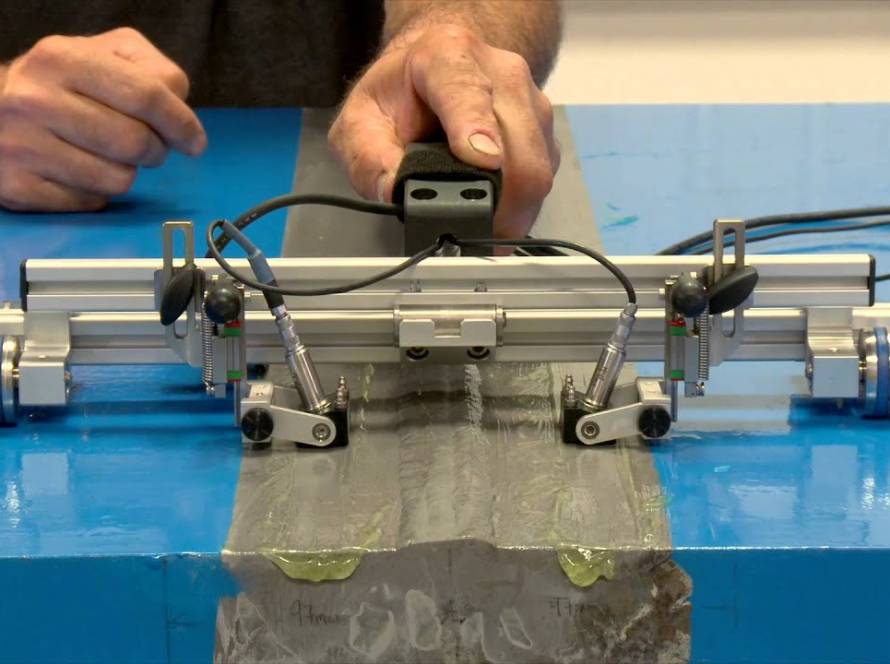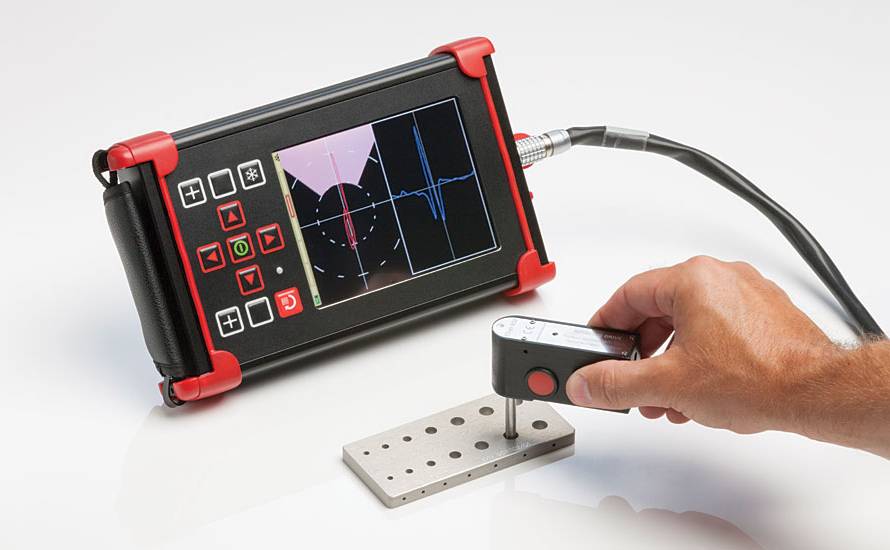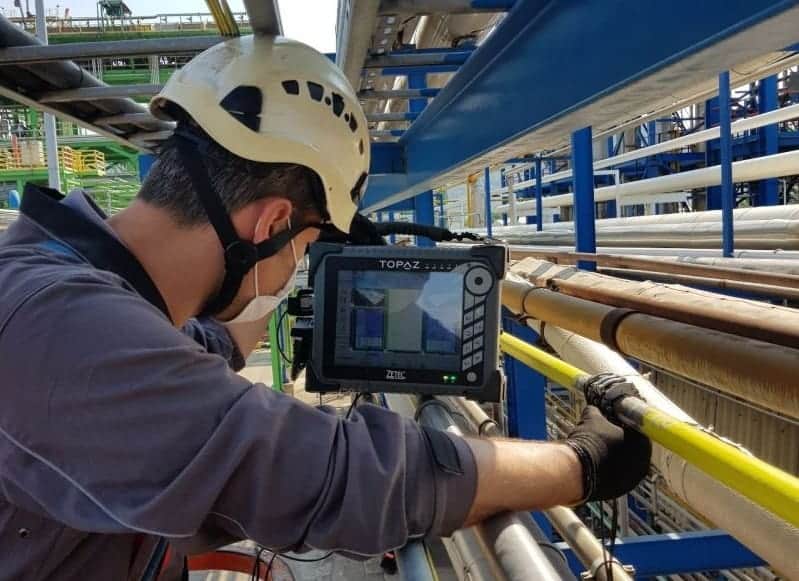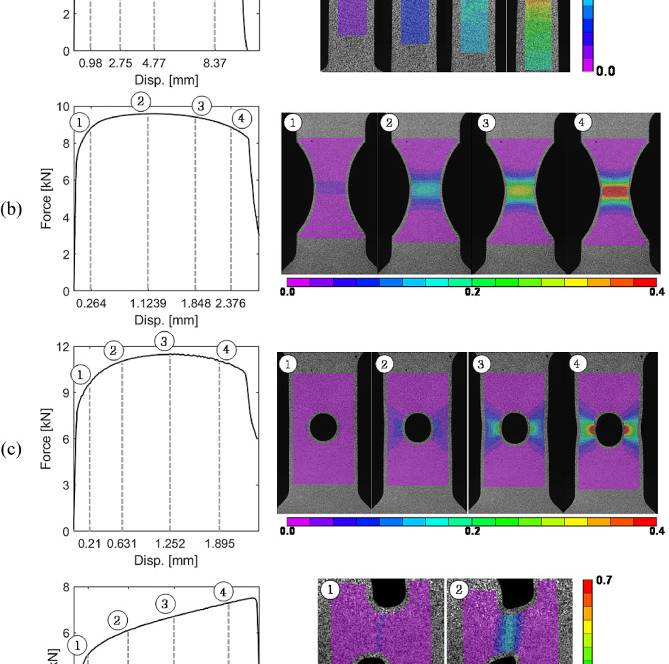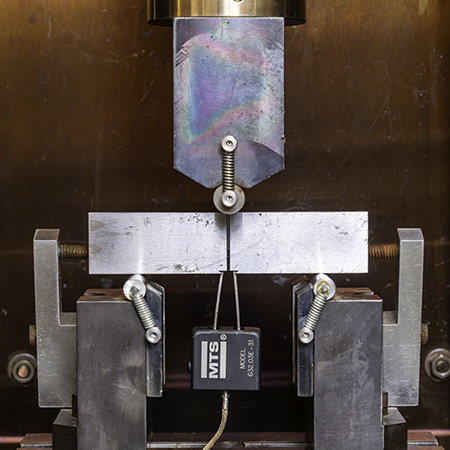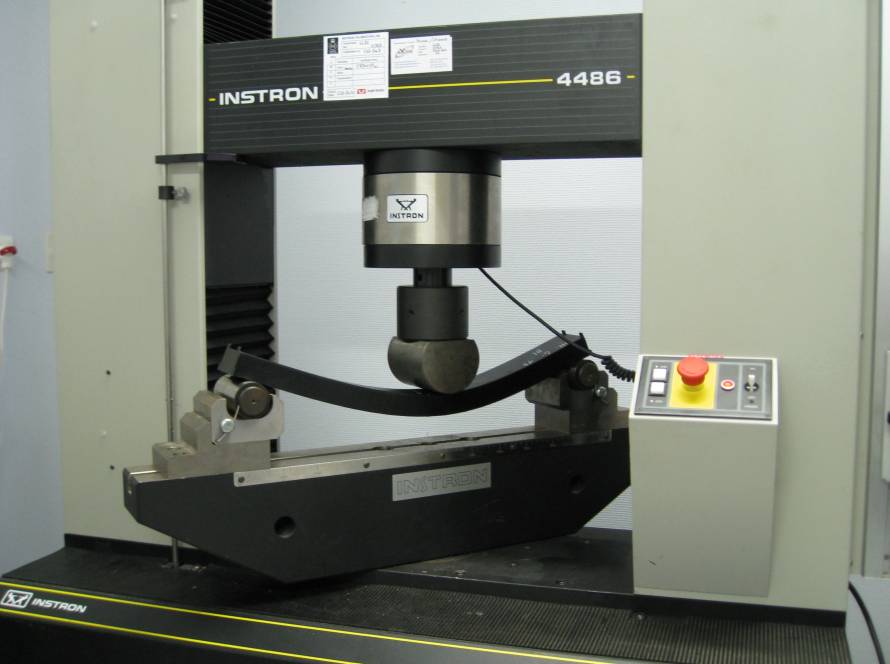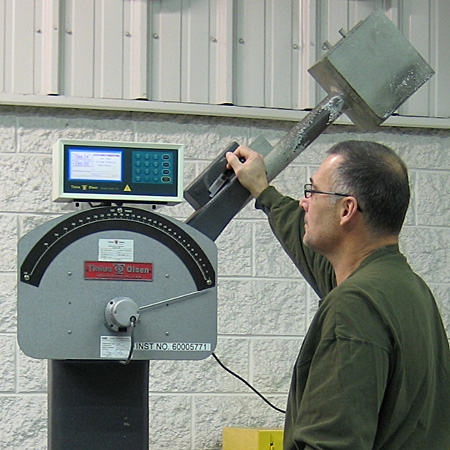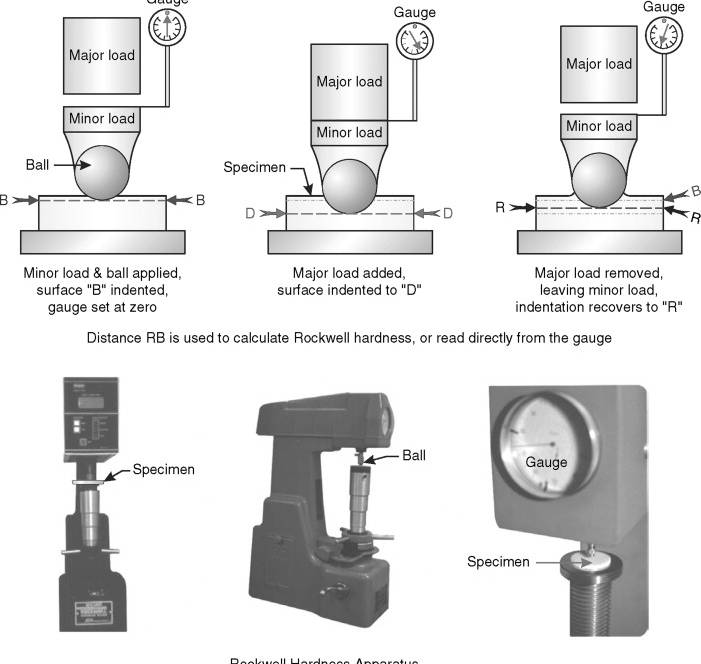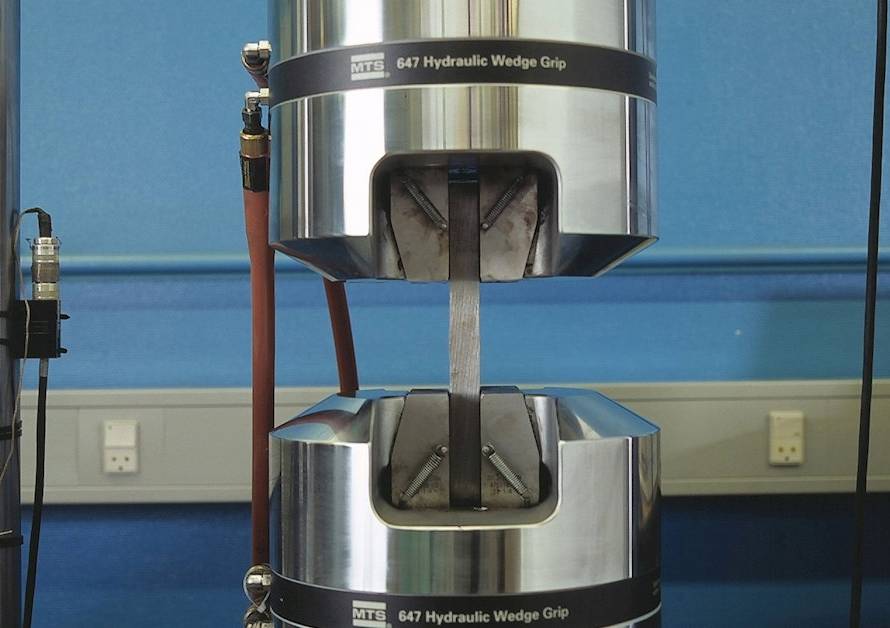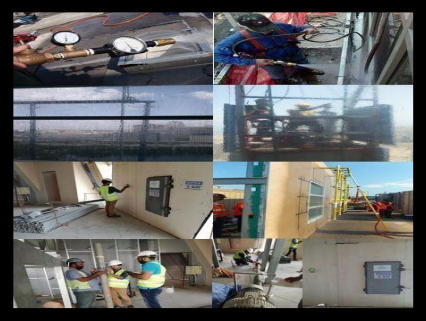Time of Flight Diffraction (TOFD) uses the time of flight of an ultrasonic pulse to determine the position and size of a reflector. When a crack is present, there is a diffraction of the ultrasonic wave from the tip of the crack. Using the measured time of flight of the pulse, the depth of a crack tips can be calculated automatically by simple trigonometry.
Eddy current testing is the process of running electronic probes through the length of various types of tubes or along the surfaces of materials in order to find flaws in them. An eddy current is a current that runs opposite to the current introduced by a probe into a conductive material.
Phased arrays are used to detect the image defects including cracks, voids, and pits caused by corrosion. They are used to measure material and coating thickness and to detect changes in material properties.
Micro and macro mechanical tests are two categories of experiments conducted to study the mechanical properties of materials at different length scales. These tests provide valuable insights into the behavior of materials under various loading conditions, aiding in material characterization, design optimization, and quality control in different industries.
Fracture toughness tests measure a material’s ability to resist the growth or propagation of a pre-existing flaw. The flaw or defect may be in the form of a fatigue crack, void, or any inconsistency in the test material.
Bend testing or flexural testing, is a crucial mechanical test used to assess a material’s ability to withstand bending forces without breaking. This testing method is particularly important for materials used in structural applications, such as construction, aerospace, and engineering, where flexibility and resilience are critical factors.
Impact testing is a critical mechanical test used to measure a material’s resistance to sudden shock and deformation. It simulates real-world scenarios where materials may be subjected to rapid and forceful impacts. This testing is particularly relevant for materials used in construction, automotive, aerospace, and other industries where impact resistance is crucial for product safety and reliability.
Hardness testing is a widely used mechanical testing method that measures a material’s ability to withstand indentation or penetration by an indenter under a specified load. It is commonly employed for metals, but can also be applied to other materials like plastics and ceramics.
The tensile test is one of the most fundamental mechanical tests used to determine the mechanical properties of a material. It is commonly conducted on metals, but can also be performed on various other materials like plastics, ceramics, and composites.The test helps engineers and scientists understand how a material responds to tensile forces, which involve stretching or elongating the material until it eventually breaks.
TTS extends its service in the field of lifting equipment inspection. We have a team of qualified and experienced inspection engineers with LEEA and NDT certifications. Our services in lifting equipment inspection include
Water passing through the window/door and curtain wall from the exterior to the interior is called water penetration. As per ASTM E1105 water penetration test, a water spray rack system is…
Air infiltration is the air which passes through the windows/doors and curtain wall from the exterior to the interior through gaskets, imperfect joinery between horizontal and vertical mullions, weep holes and imperfect…
